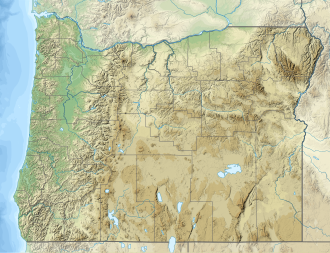| China Hat | |
|---|---|
| Highest point | |
| Elevation | 6,573 |
| Coordinates | 43°40′51″N121°02′02″W / 43.680874°N 121.033844°W |
| Geography | |
| Location | Deschutes, Oregon, U.S. |
| Parent range | Cascade Range |
| Topo map | USGS China Hat |
| Geology | |
| Rock age | 6.3 - 7.4 Ma [1] |
| Mountain type | Pyroclastic cone |
| Volcanic arc | Cascade Volcanic Arc |
| Last eruption | Pleistocene |
China Hat is a volcanic butte on the southeastern flank of Newberry Volcano in Deschutes County, Oregon, United States. It is a rhyolitic dome dating from the age of the Middle Pleistocene. [2] Both China Hat and nearby East Butte are covered by Mazama Ash and Newberry Ash. [3]
Although China Hat is often thought of as a side vent of Newberry Volcano less than ten miles away, [4] it is estimated to be older than first formation of the Newberry Caldera, 780,000 thousand years old [5] versus 500,000 years ago [6] and is on the western edge of a series of high lava plains eruptions derived from a tongue of the same mantle plume that fuels the Yellowstone Caldera [7]
China Hat Road, named after the butte, starts in Bend and heads to Fort Rock. [8] The road is a hotspot for law enforcement. [8] China Hat Campground is a campground located near China Hat butte along this road. [9]
The butte was named for its similarity in appearance, when viewed from Fort Rock, to the Asian conical hat worn by Chinese immigrant laborers. [8]
